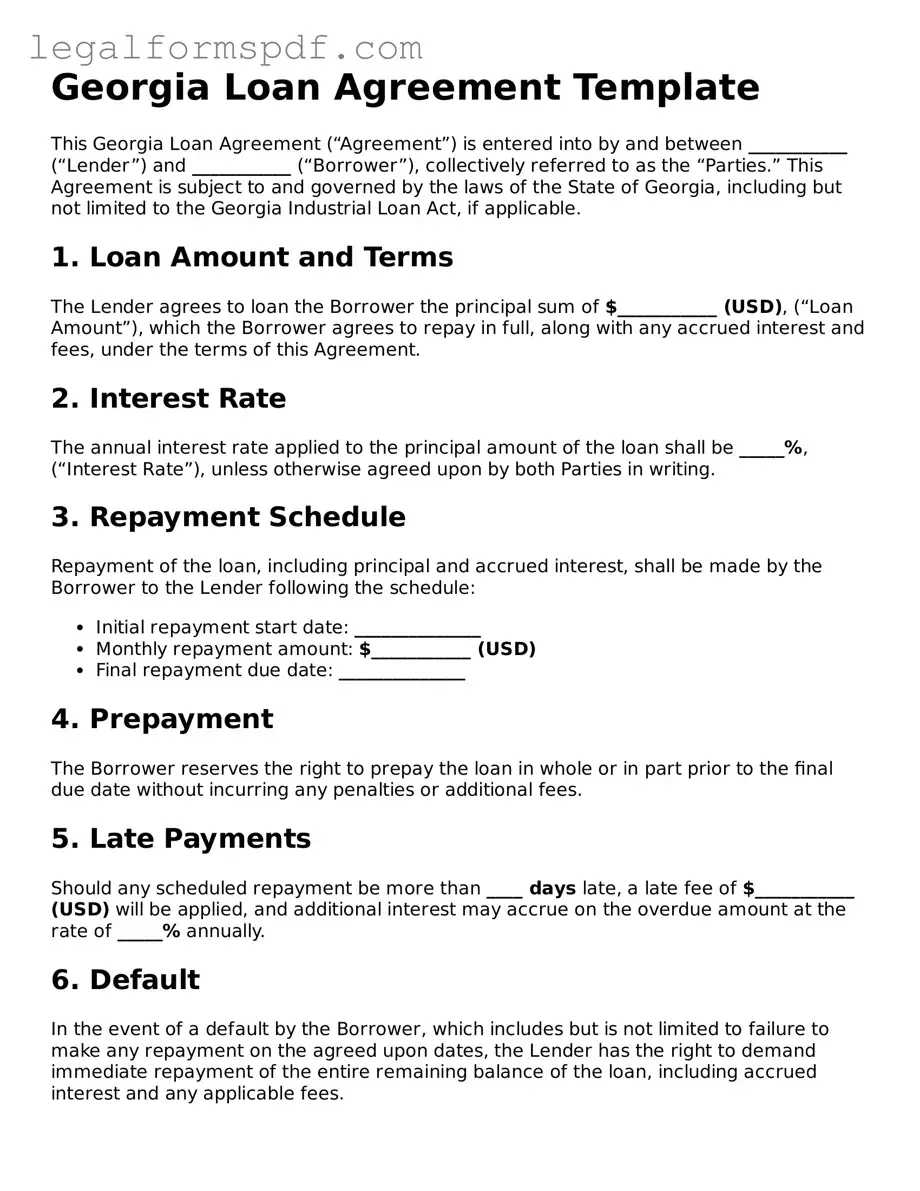Georgia Loan Agreement Template
This Georgia Loan Agreement (“Agreement”) is entered into by and between ___________ (“Lender”) and ___________ (“Borrower”), collectively referred to as the “Parties.” This Agreement is subject to and governed by the laws of the State of Georgia, including but not limited to the Georgia Industrial Loan Act, if applicable.
1. Loan Amount and Terms
The Lender agrees to loan the Borrower the principal sum of $___________ (USD), (“Loan Amount”), which the Borrower agrees to repay in full, along with any accrued interest and fees, under the terms of this Agreement.
2. Interest Rate
The annual interest rate applied to the principal amount of the loan shall be _____%, (“Interest Rate”), unless otherwise agreed upon by both Parties in writing.
3. Repayment Schedule
Repayment of the loan, including principal and accrued interest, shall be made by the Borrower to the Lender following the schedule:
- Initial repayment start date: ______________
- Monthly repayment amount: $___________ (USD)
- Final repayment due date: ______________
4. Prepayment
The Borrower reserves the right to prepay the loan in whole or in part prior to the final due date without incurring any penalties or additional fees.
5. Late Payments
Should any scheduled repayment be more than ____ days late, a late fee of $___________ (USD) will be applied, and additional interest may accrue on the overdue amount at the rate of _____% annually.
6. Default
In the event of a default by the Borrower, which includes but is not limited to failure to make any repayment on the agreed upon dates, the Lender has the right to demand immediate repayment of the entire remaining balance of the loan, including accrued interest and any applicable fees.
7. Governing Law
This Agreement shall be governed by and construed in accordance with the laws of the State of Georgia.
8. Consent to Jurisdiction
The Parties hereby consent to the exclusive jurisdiction of the state and federal courts located within Georgia for the resolution of any disputes arising out of or relating to this Agreement.
9. Amendments
Any amendments to this Agreement must be made in writing and signed by both Parties.
10. Notices
All notices or communications related to this Agreement shall be in writing and sent to the Parties at their respective addresses mentioned at the beginning of this document or to any other address as either Party may have specified in writing.
11. Severability
Should any provision of this Agreement be held to be invalid or unenforceable, the remaining provisions shall remain in full force and effect.
12. Entire Agreement
This document constitutes the entire Agreement between the Parties regarding the subject matter herein and supersedes all prior agreements or understandings, whether written or oral.
13. Signatures
This Agreement is effective as of the date of the latest signature below and is executed by the Parties as follows:
Lender's Signature: _____________________ Date: ___________
Borrower's Signature: ____________________ Date: ___________
